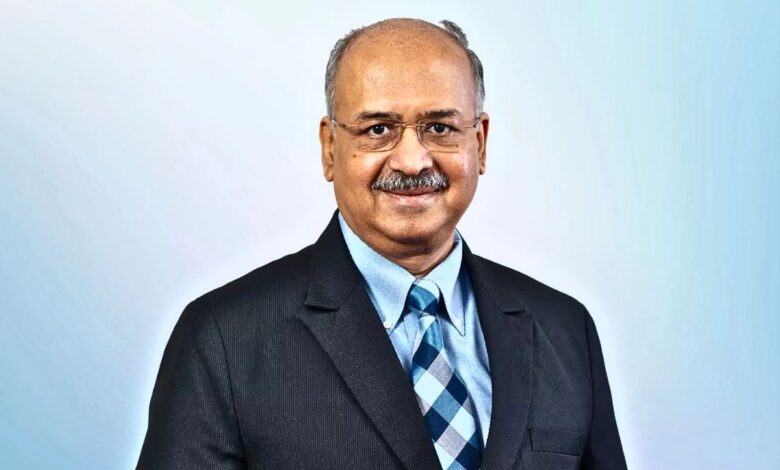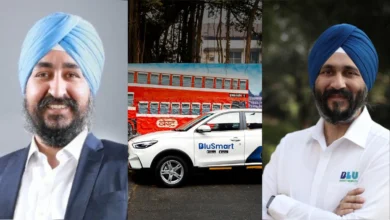From A Modest Shed To Market Dominance: Dilip Shanghvi’s Rise As India’s Pharma Trailblazer

In a world dominated by towering industrial figures, Dilip Shanghvi emerged as a quiet yet transformative force in India’s pharmaceutical industry. His journey from a modest wholesale medicine shop in Kolkata to building a global pharmaceutical powerhouse is nothing short of extraordinary. While his name may not have always been as recognized as others, there was a moment in 2015 when he topped the list as India’s richest man, temporarily surpassing Mukesh Ambani—a testament to his remarkable achievements.
Humble Beginnings, Bold Vision of Dilip Shanghvi
In 1982, armed with a degree and a deep understanding of the pharmaceutical supply chain from his father’s business, Dilip Shanghvi saw an opportunity that others missed. Generic drugs sold at his father’s shop carried razor-thin margins. However, he identified a niche—psychiatric medications, which had higher margins and were poorly served by major pharmaceutical companies. With just ₹10,000 borrowed from his father, Shanghvi laid the foundation for Sun Pharma.

Starting with a single drug, Lithosan, for bipolar disorder, Dilip Shanghvi operated out of a 3,000 sq. ft. rented shed in Vapi, Gujarat. He didn’t have state-of-the-art facilities or a large team—only resourcefulness and the determination to fill gaps in the market. By 1987, Sun Pharma expanded into cardiology and gastroenterology, entering markets and categories that many larger players had overlooked.
Scaling the Peaks, One Acquisition at a Time
Sun Pharma’s early success wasn’t just about manufacturing—it was about a calculated strategy. In 1994, when the company went public, its IPO was oversubscribed 55 times, reflecting the market’s confidence in Shanghvi’s vision. By this time, Sun Pharma had already become a ₹500 crore company, breaking into India’s pharmaceutical elite.
What followed was a masterclass in strategic growth. Recognizing that domestic competitors wouldn’t venture aggressively into international markets, Dilip Shanghvi targeted acquisitions to establish a foothold abroad. Sun Pharma acquired Caraco Pharma in the United States and MJ Pharma in the United Kingdom, gaining not only facilities but also critical market access. These moves solidified Sun Pharma’s position as India’s largest exporter of generic medications to the U.S. and Europe by the late 1990s.
Innovation in Product and Process
Dilip Shanghvi’s leadership wasn’t confined to acquisitions. He built Sun Pharma’s reputation on quality and reliability, ensuring that each new product—be it respiratory medications from NATCO Pharma or ophthalmology products from Milmet Labs—met stringent standards. His focus on diversification and developing niche treatments allowed Sun Pharma to thrive even in the face of fierce competition. By 2002, the company was producing billions of tablets and had become one of India’s top five pharmaceutical firms.
The Deal That Changed Everything
A defining moment in Shanghvi’s career came in 2015. Recognizing the intensifying competition and the U.S. FDA’s new push for generic drug approvals, Shanghvi orchestrated one of the industry’s most significant acquisitions—Ranbaxy Laboratories. This deal, valued at ₹2,000 crore, instantly made Sun Pharma the largest pharmaceutical company in India and one of the top five global generic drug manufacturers. It was a bold move that demonstrated Dilip Shanghvi’s ability to think several steps ahead, not just in India but on a global scale.
A Legacy of Excellence
Today, Sun Pharma stands as a ₹40,000 crore company, employing thousands and delivering vital medicines across the globe. Under Shanghvi’s stewardship, it has become synonymous with reliability, affordability, and innovation. He transformed a modest idea into a multinational enterprise that sets benchmarks for the entire industry.
Shanghvi’s journey is not just about wealth—though his net worth of over ₹1,50,000 crore is staggering. It’s about a visionary who redefined what Indian companies could achieve in the global pharmaceutical arena. By focusing on underserved markets, making smart acquisitions, and maintaining an unwavering commitment to quality, he paved the way for Sun Pharma to become the jewel of India’s pharmaceutical sector.

Dilip Shanghvi’s rise from a small wholesale shop in Kolkata to the helm of a global pharmaceutical giant is a story of grit, foresight, and quiet determination. It’s the story of a man who saw potential where others didn’t, who built a company that didn’t just make medicines but also created value for millions. In 2015, when he briefly held the title of India’s richest man, it was more than a statistic—it was a reflection of his visionary leadership and lasting impact. Today, Dilip Shanghvi stands as an inspiring figure, proving that with the right mix of innovation, strategy, and perseverance, anyone can rewrite the rules of success.





